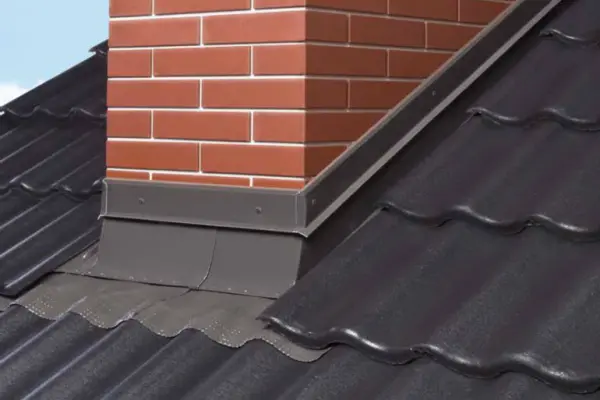Joint sealing tape is a specialized self-adhesive roofing tape designed to seal joints with various protruding elements. In 2025, the market shows steady growth, with the price of joint sealing tape ranging from $15 to $50 per roll depending on the type and brand. It is made based on bitumen, EPDM rubber, lead foil, or aluminum with an adhesive layer.
High-quality waterproofing tape provides protection against moisture. It should be noted that the correct choice of material directly affects the durability of the entire system - serving as a protective barrier for your home against the whims of nature. Wakaflex joint sealing tape with a lead base is distinguished by its exceptional strength and UV resistance in accordance with European standards EN 1928.
"A properly selected joint sealing tape can extend the lifespan of a roof by 15-20 years, saving homeowners thousands of dollars on repairs." - Michael Anderson, roofing engineer with 25 years of experience
Advantages of Using Roofing Sealing Tape
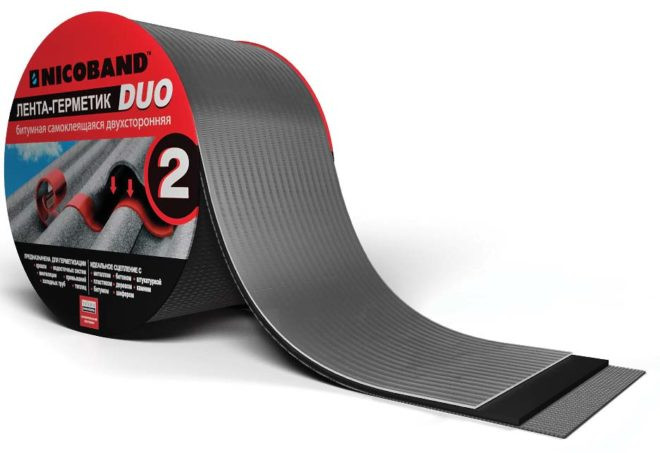 Modern joint tapes offer numerous advantages. Their effectiveness has been proven over the years. It is known that even a small leak can cost thousands of dollars in repairs, making high-quality self-adhesive roofing tape a smart investment.
Modern joint tapes offer numerous advantages. Their effectiveness has been proven over the years. It is known that even a small leak can cost thousands of dollars in repairs, making high-quality self-adhesive roofing tape a smart investment.
In practice, I often notice how homeowners underestimate the importance of quality sealing. Key advantages include reliable moisture protection and a long service life of up to 25 years. Sealing tape withstands extreme temperatures and ultraviolet radiation.
- Easy installation of roofing tape without specialized equipment
- Wide range of colors and materials for optimal selection
- Cost-effectiveness compared to traditional methods
- Versatility for use on various materials
Thermal deformations of the roof from -40°C to +80°C? Not a problem for modern materials. The operating temperature range of quality tapes ensures reliable performance in extreme conditions, which is especially important in regions with harsh climates where temperature fluctuations reach critical levels.
Installation and Application of Joint Sealing Tape
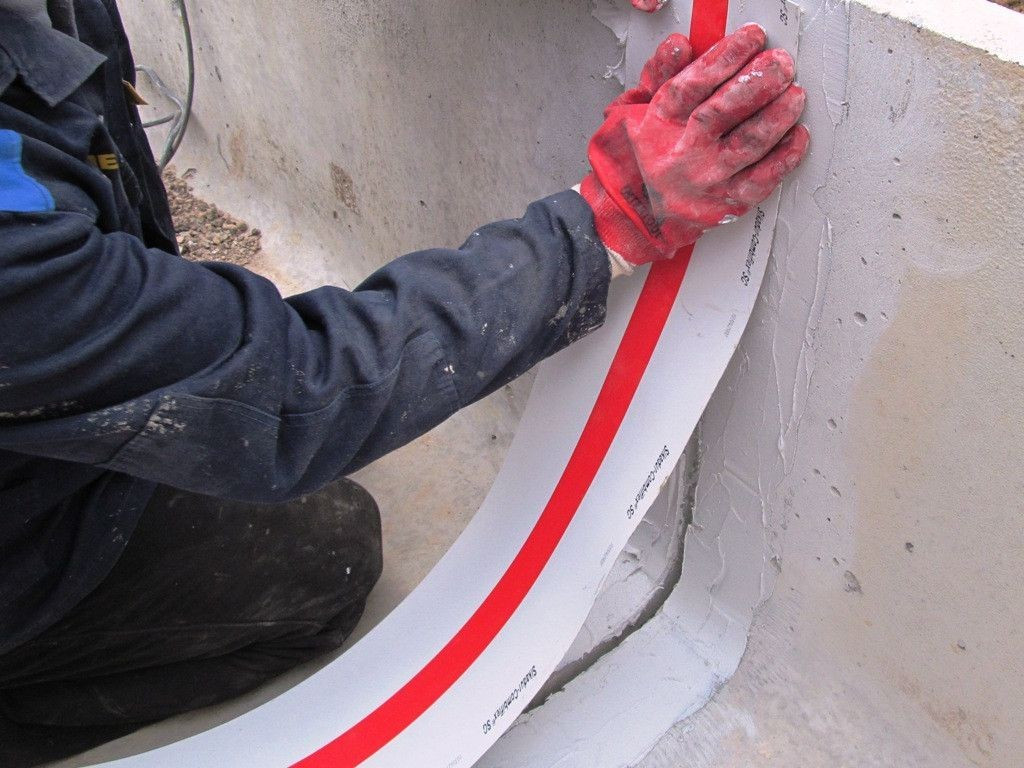 The installation process is quite simple. However, it requires adherence to technical nuances for maximum sealing efficiency of roofing joints. In one recent project for a 180 sq.m cottage, we completed all the work in a single day.
The installation process is quite simple. However, it requires adherence to technical nuances for maximum sealing efficiency of roofing joints. In one recent project for a 180 sq.m cottage, we completed all the work in a single day.
Surface preparation is critically important. The surface must be smooth, without sharp protrusions that could damage the tape. For porous materials (concrete, brick), applying a bitumen primer is mandatory in accordance with SP 71.13330.2017. The protective film is removed gradually, pressing the waterproof tape with a roller to the surface at a temperature not lower than +5°C.
"In one recent project, we used aluminum tape to seal skylights in a 250 sq.m cottage. Despite the complex roof geometry, the installation took just one day, and the result exceeded the client’s expectations - no leaks after two years of operation."
Where to buy joint sealing tape? Specialized companies offer a wide range of products from various manufacturers. Considering the structural features of modern roofs, it’s important to choose a solution based on budget and durability requirements.
Features of Winter Installation
At temperatures below +5°C, preheating the surface and the tape with a heat gun to +10°C is necessary. The holding time for the heated material is 15-20 minutes. This ensures the necessary elasticity and adhesion in cold conditions.
Comparison of Sealing Tape Types and Manufacturers
The modern market offers several main types of sealing tapes, each with its own characteristics and applications.
| Tape Type | Service Life | Temperature Range | Price per m² | Roof Compatibility | Leading Brands |
|---|---|---|---|---|---|
| Bitumen Tape | 8-12 years | -30°C to +70°C | $2-4 | Roll roofing, soft roofing | Nicoband, TechnoNICOL |
| Butyl Rubber Tape | 15-20 years | -40°C to +80°C | $5-8 | Metal tiles, corrugated sheets | Klober, DenBraven |
| Aluminum Tape | 12-18 years | -35°C to +85°C | $4-7 | All types except copper roofs | Tytan, Grand Line |
| Lead Tape (Wakaflex) | up to 25 years* | -45°C to +90°C | $8-12 | Ceramic tiles, slate | Wakaflex, BMI Icopal |
| Hybrid Composite | 18-25 years | -50°C to +95°C | $10-15 | Premium projects, any roofing | Sika, Henkel |
*Depending on operating conditions and environmental aggressiveness. Modern hybrid tapes with composite reinforcing mesh combine the flexibility of butyl rubber and the tear resistance of aluminum, used in premium-class projects. This table will help you choose the optimal joint sealing tape based on material compatibility.
Choosing Tape Based on Roofing Material
Metal tiles require a special approach. For reliable sealing of joints with walls and pipes, rubber or aluminum materials are best. Why these types?
Butyl rubber tape compensates for metal expansion. It is known that metal expands and contracts with temperature changes, so elasticity is critical for the durability of the joint. Aluminum variants are chemically inert and convenient for installation on sloped roof sections.
Ceramic tiles are better paired with bitumen or lead materials. They offer plasticity for tight adhesion to uneven surfaces. In practice with private clients, I often explain that a quality joint sealing tape pays off by preventing leaks within 2-3 years.
"When choosing material for skylights, not only cost but also ease of installation matters. A properly selected tape can save up to 40% of installation time." - roofing technology expert
Soft roofing requires specialized bitumen compounds. Slate roofs are better suited to lead or composite reinforced tapes, resistant to mechanical damage from sharp material edges.
Common Mistakes in Roofing Tape Installation
Quality tape can fail if installed incorrectly. Let’s review the most common mistakes that reduce sealing effectiveness and lead to costly rework.
Installing on a contaminated surface is a critical error. Dust and dirt significantly reduce adhesion, inevitably leading to material peeling within 1-2 seasons. The surface must be cleaned with a solvent and allowed to dry completely before starting work.
Installation at low temperatures makes the material rigid. Below +5°C, the tape loses elasticity and the ability to conform to surface contours, leading to gaps. In one project during the winter of 2024, we had to redo the entire chimney sealing due to ignoring this rule.
Insufficient width is a costly mistake. For chimneys, the minimum is 280-300 mm (standard width), and for skylights, 150 mm. Narrow tape does not provide reliable adhesion and quickly detaches from the base.
Cheap tapes without UV protection degrade within 2-3 years. Keep in mind that skimping on quality leads to expensive repairs of the entire roofing system.
Ignoring material compatibility. For example, aluminum tapes on copper roofs cause galvanic corrosion. Silicone sealants are incompatible with bitumen tapes.
"According to manufacturers, most issues arise from improper installation techniques. Proper surface preparation and adherence to temperature conditions are critical for durability." - technical specialist from a manufacturing company
Features of Using Roofing Tape for Various Joints
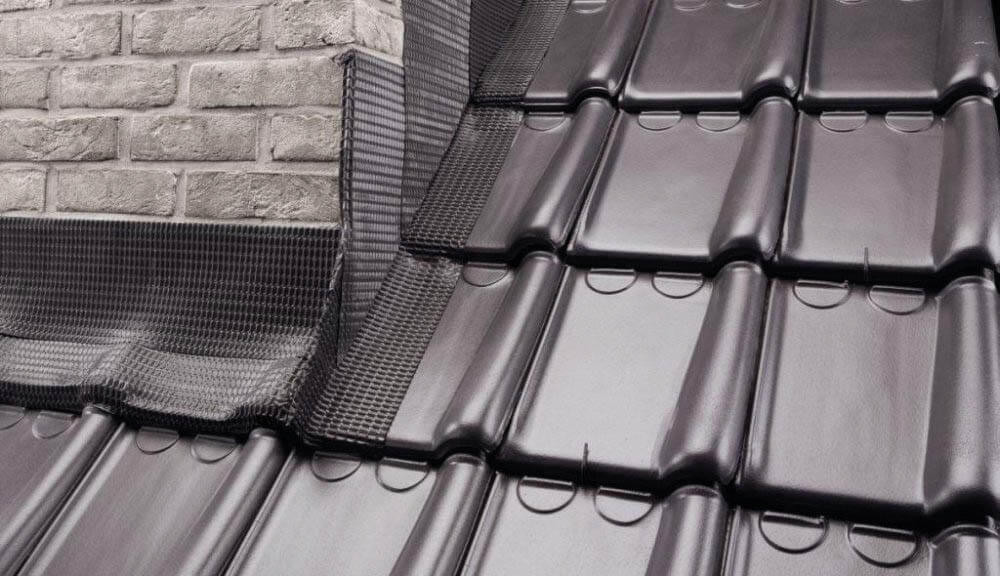 Joints with chimneys are among the most challenging roof sections. Temperature fluctuations here reach maximum values, requiring a particularly thorough approach to material selection.
Joints with chimneys are among the most challenging roof sections. Temperature fluctuations here reach maximum values, requiring a particularly thorough approach to material selection.
For chimneys, aluminum tape or lead materials like Wakaflex are recommended. The tape width should be at least 200-300 mm to ensure reliable adhesion to both horizontal and vertical surfaces. Note that metal chimneys heat up more than brick ones, requiring tapes with enhanced heat resistance.
Sealing skylights has its own specifics. In one project last season, we used special tapes with enhanced adhesion, creating a completely watertight joint even under significant wind loads.
Signs of Wear and Need for Replacement of Sealing Tape
Timely detection of wear signs can prevent serious leaks. Pay attention to the following signals:
- Swelling or peeling of tape edges from the surface
- Color change of the material (fading, darkening)
- Loss of adhesiveness - the tape detaches easily upon touch
- Appearance of cracks or tears in the material
- Leaks after heavy rain or snowmelt
Upon detecting any of these signs, immediate replacement of the damaged tape section is recommended.
Proper Installation Technique for Sealing Tape
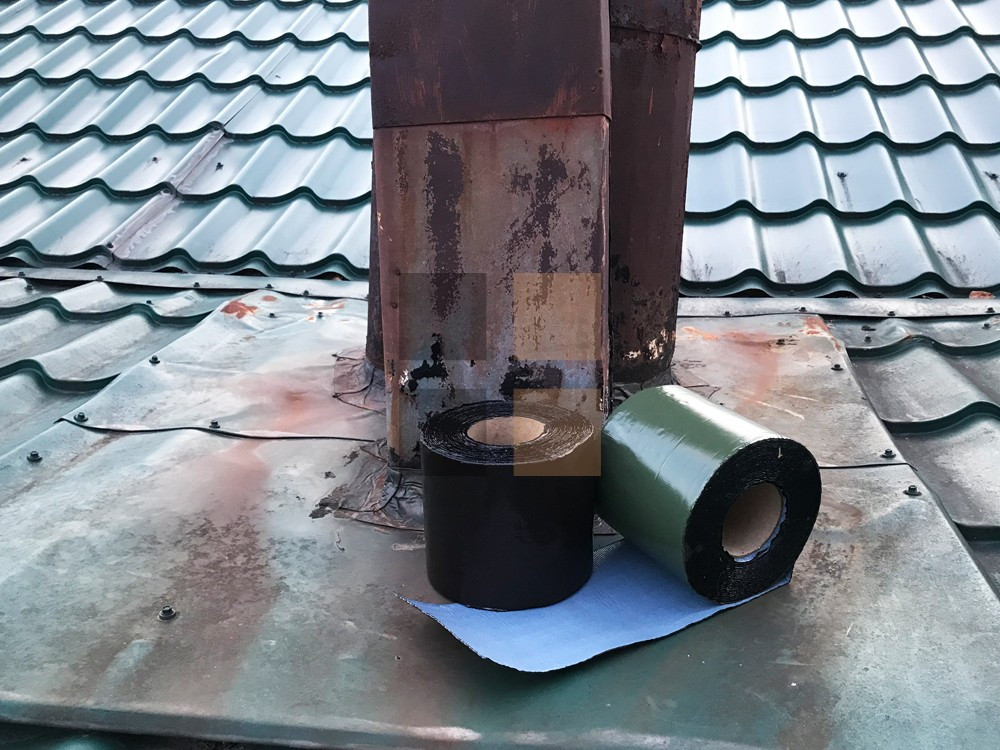 Surface preparation is a critical step. The base must be clean, dry, and degreased.
Surface preparation is a critical step. The base must be clean, dry, and degreased.
Dust reduces adhesion by 30-40%. Therefore, always use a brush and solvent. Installation temperature conditions affect adhesion quality.
At temperatures below +5°C, preheating both the surface and the joint sealing tape is necessary. It is known that cold tape loses elasticity and poorly conforms to surface contours.
"The most common installation mistake is rushing. The tape must be pressed to the surface gradually, with a roller or spatula, to prevent air bubbles. Time spent on quality installation pays off with years of flawless service." - roofer with 15 years of experience
Proper rolling technique involves moving from the center to the edges with constant pressure. The protective film is removed gradually, in 30-50 cm sections. This prevents dirt from getting on the adhesive layer and ensures even adhesion.
Maintenance and Extending the Service Life of Roofing Tape
Regular inspections are key to longevity. It is recommended to check the condition of joint sealing tape twice a year: in spring and fall. Visual assessment helps detect cracks, peeling, or other defects early.
Cleaning from debris extends service life. Accumulated leaves, dirt, and debris create additional stress and can lead to premature wear of the sealing tape. Use soft brushes for cleaning - like a surgical tool for a delicate operation.
Depending on the material type and operating conditions, manufacturers recommend full replacement every 10-15 years. Considering the structural features of modern roofs, timely renewal of the protective layer prevents serious issues.
Additional recommendations for roof maintenance and keeping it in excellent condition can be found in an expert guide on roof maintenance, which will help prevent costly repairs.
Economic Efficiency of Using Joint Sealing Tapes
The cost of quality sealing is minimal. It accounts for only 2-3% of the total roofing budget, but the potential savings from preventing leaks can reach $5,000-$15,000, depending on the house size, climate conditions, and roof type. A smart investment pays off within the first few years of operation.
Comparison with alternative methods highlights the advantages of tape sealing. Traditional mastics require renewal every 3-5 years. Mechanical fasteners create additional potential leak points, increasing risks for the entire structure.
In practice with clients, I often explain the long-term benefits. Quality roof repair with tape is initially more expensive but lasts 2-3 times longer than cheap alternatives. This is especially important for hard-to-reach areas where repeat repairs are very costly.
"In 2023, at a suburban project, we replaced old mastic sealing with modern bitumen tape. The result was impressive: no leaks with a 60% reduction in labor costs Ed. The client saved $3,200 on the initial repair phase alone." - success story from a construction company
With proper selection and installation, joint sealing tape ensures reliable sealing of roof joints for many years. Compliance with technical requirements of SP 71.13330.2017 and European standards EN 1928 guarantees maximum efficiency. Investments in quality sealing materials pay off with the preservation and longevity of the entire roofing system.
